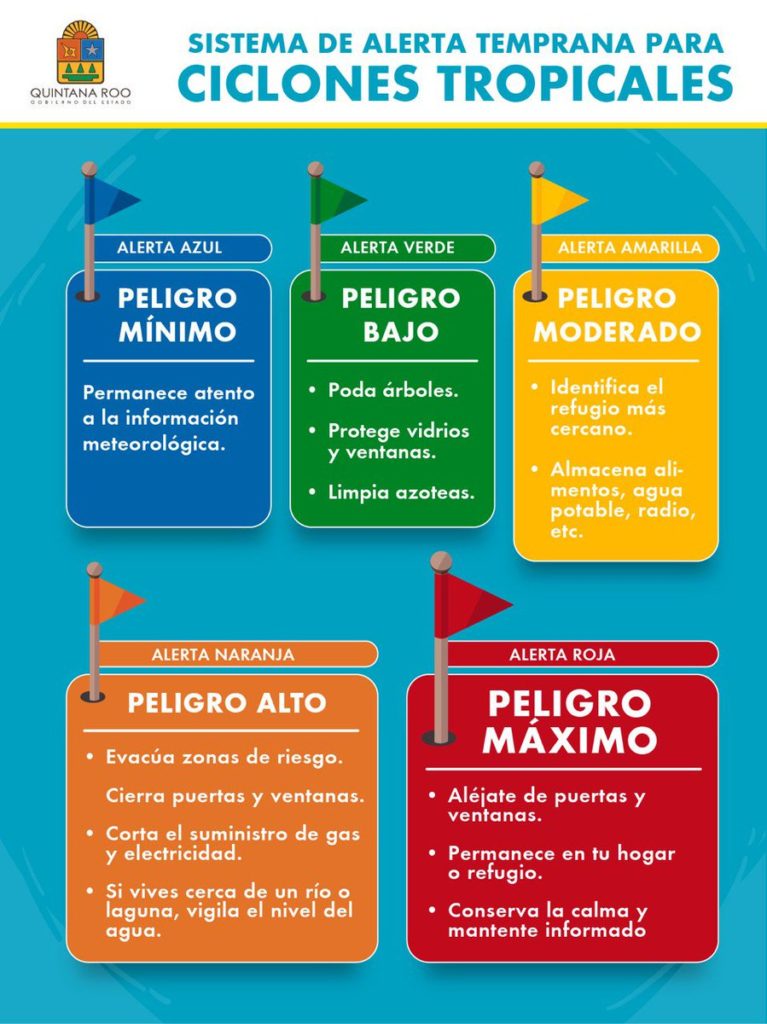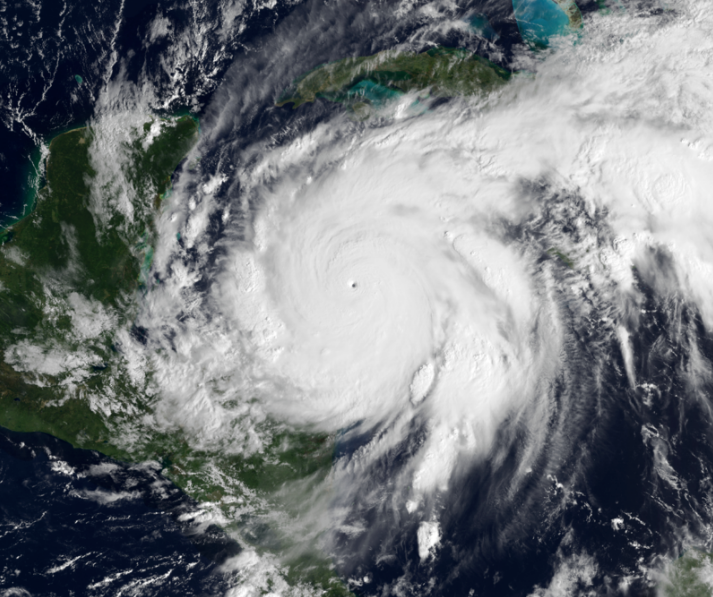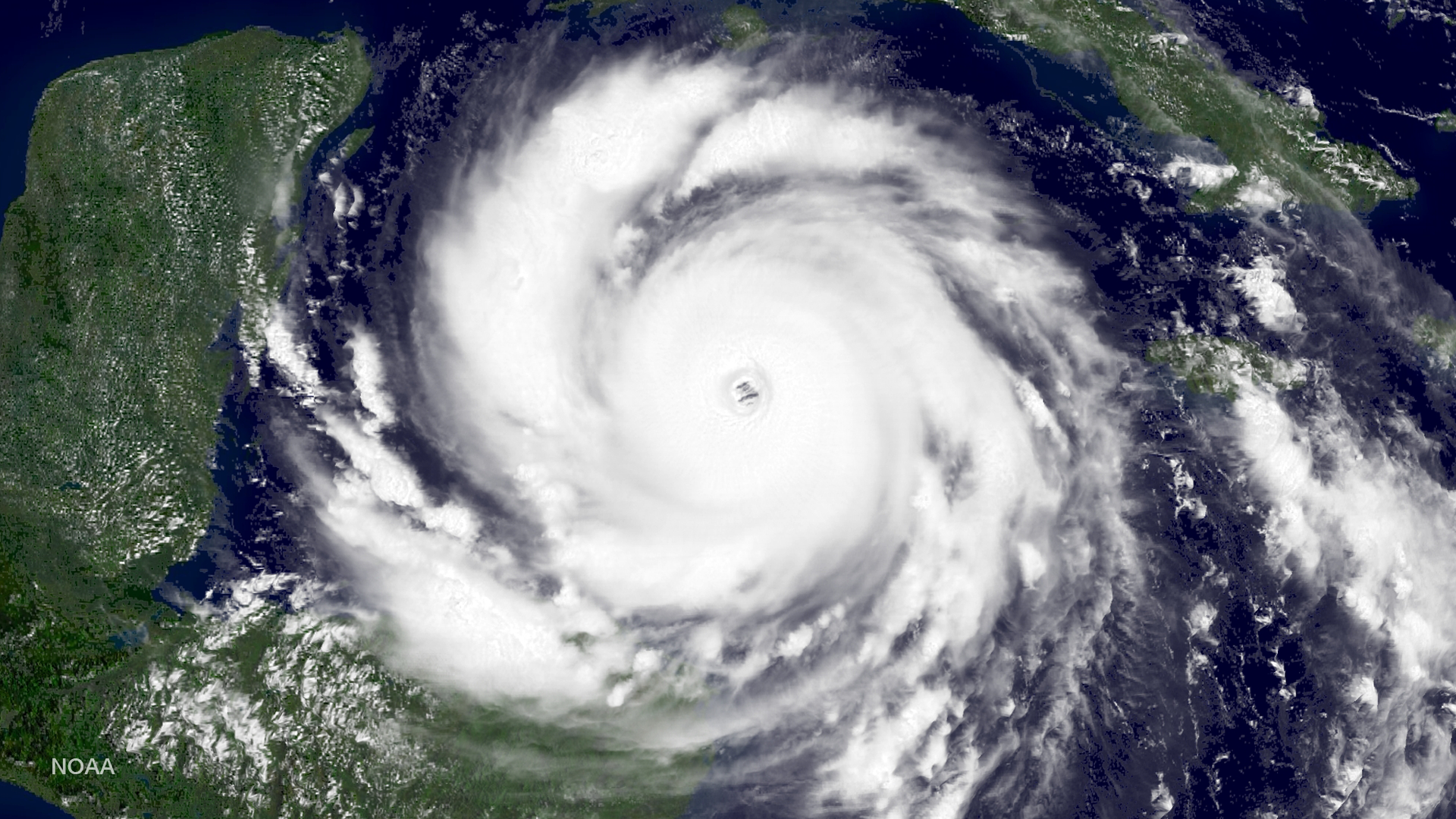Puerto Morelos—where the skies are always blue and the sun never stops shining. And then rainy season hits…
While most days are filled with sunshine and clear skies, the Caribbean coast of Mexico also experiences a rainy and hurricane season, spanning from June 1st to November 30th.
And 2024 is predicted to be one of the most active hurricane seasons on record…
But with that being said, the 2023 hurricane season in the Mexican Caribbean was also predicted to be very active. While we did experience some stormy weather in early June and observed hurricane activity in the Atlantic, no major hurricanes made landfall (thankfully!).
But what will 2024 bring?!
The only thing that is certain, is mother nature remains unpredictable….
Nevertheless, it’s important to stay informed and prepared. And this year’s forecasts are more alarming than usual. The latest predications are calling for 25 named storms, 12 hurricanes, and 6 major hurricanes—a record forecast! Eek!
With all that being said, It’s important to balance preparedness with peace of mind. As the saying goes, “Hope for the best, but prepare for the worst.”
2024 may pan out to be just as inactive as 2023, but it’s better to be safe than sorry. So here are our five(-ish?!) essential tips to help you get ready for and endure a hurricane in Puerto Morelos.
1. STAY INFORMED AND KNOW YOUR ALERT COLORS
The only good thing about hurricanes and tropical storms is that you know when they are coming. And they are typically slow moving. It’s not like a tornado that drops down out of nowhere with a 10 minute warning.
Hurricanes and tropical storms are tracked by the National Hurricane Center typically days (or weeks!) in advance and the local and state government do a great job of keeping us informed.
A great source to follow is Ayuntamiento de Puerto Morelos, our current governor’s page Mara Lezama, and of course the National Hurricane Center. The NHC starts tracking from the first signs of activity.
No matter who you follow, be sure to understand the color coded advisory issued by the local and state government. It is based on estimated time and distance from landfall… Starting from Blue to Red, it goes as follows:
ALERTA AZUL– Lowest level of danger. Basically a storm watch. Expect updates every 12 hours.
ALERTA VERDE– Second level of alert showing there is a probability a storm will make landfall. Again, expect updates every 12 hours.
ALERTA AMARILLA– This is when you start preparing your home! It means there is a moderate danger of an event. Expect updates every 6 hours.
ALERTA NARANJA– High probability of landfall! Once we reach Naranja, have an evacuation plan in place if needed or make sure you are prepared to shelter in place! At this point, many businesses will close and public transportation shuts down. Expect updates every 3 hours or less.
ALERTA ROJA– Landfall is imminent. At this point, shelter in place and avoid going outside for any reason. Expect updates every 3 hours.

2. PREPARE YOUR HOME
As a homeowner, you know that there’s always something to fix. And NOW is the time to do it… Do not wait until a hurricane is heading our way!
Especially if it’s a leaky roof or a faulty window; one small drip could cause a flood come storm time!
Here’s a friendly reminder of things to check out before we get too far into the rainy season and a few things to do once the storm is due to make landfall…
- Clean your gutters and downspouts.
- Check and repair the roof for cracks and leaks. Maybe it’s just a small drip now, but it could flood your house come hurricane time!
- Make sure your windows are secure and not leaking! If you think they are vulnerable be sure to get plywood, storm shutters, storm fabric, or tape – there are many different options. If you have protectores on your windows this will provide some protection, add plywood or shutters for more protection. Note that you NEED to buy these items ASAP, not the day a hurricane is going to arrive. The second the governor announces there is a chance of a storm, Home Depot (and every other store) will sell out of these items very quickly.
- Make sure permanent fixtures such as gas tanks and mini splits are secured. Got solar panels? Make sure they are secured, or if they need to come down in a storm. If so, be sure to have a team in place to help remove them from your roof.
- Be sure to trim back any branches or trees that could disturb your home in high winds. Got coconuts? Be sure to harvest them.
The Storm is Heading Our Way – Now what?
- Once we enter into Alert Amarilla you will need to start preparing everything around your home. Close hurricane shutters, put up plywood, secure patio furniture and plants. Remove solar panels if needed.
- If you do not have a Tinaco (water storage tank – usually on your roof) and the power goes out, you won’t have water to flush the toilets. Fill up buckets in advance.
- Get gas in your car/generator (don’t wait on this – there will be long lines at the gas station as the storm gets closer, then the station will close early)
- Charge your phones and other electronics. If possible, have a backup charger fully charged – cell service should remain steady – if it goes out, it will probably be back up before the electricity is restored.
- Unplug your electronics as the storm arrives.
- If you have a pool, you’ll need to prepare it as well — remove everything from the pool, lower the level of water (but do not drain it completely), add extra chlorine, turn off electricity to the pump and secure the pump if necessary. Here is a useful article on pool prep – https://intheswim.com/eguides/hurricane-pool-preparation.html
Want more information and tips on home maintenance and hurricane prep in the tropics? Check out our Youtube video from our Moving to Mexico Mondays Series.
3. PREPARE YOURSELF & YOUR PETS
Ok, again- Don’t wait until the last second to have these items on hand! You can start stocking up on the basics now, so you don’t have to stand in line and risk not getting them at the last minute.
- First aid kit and proper supply of medication
- Drinking water
- Non-perishable food
- Wine! And other alcoholic beverages (liquor sales will be suspended prior to the storm)
- Candles/flashlights/headlamp/Solar powered lantern with USB
- Back-up batteries
- Lighter or matches
- Squeegee, mops, and buckets
- Pet food (if you have animals) and make sure you have pet crates handy if you need to move your pets and keep them safe if you need to evacuate.
- Storage bins to keep electronics and personal documents dry
- Post storm clean-up: Heavy duty garbage bags, work gloves
- Activities during the storm, especially for families: board games, cards, charged computers with movies downloaded
- Have a go bag ready, just in case of last minute evacuation – at a minimum, you’ll need your medications, flashlights, drinking water, IDs, cash, clothing & proper footwear, extra chargers for phones, toiletries and pet items.
While these items aren’t required, necessarily, we think you should consider having them on hand in the event of a major storm/hurricane:
- Portable or Stationary Generator
- ShopVac
- Hand saw or Chainsaw
- Battery operated fan
4. DURING THE STORM
One thing many first timers ask is DO WE HAVE TO EVACUATE?! The answer is that it depends on the strength of the storm and your location of course. If the municipality requires evacuation, they will go door to door to notify you and advise you on your options for shelter.
Even if the government doesn’t require evacuation, some people prefer to leave their homes prior to the storm hitting — they pack up and go inland or north or south, depending on the projected trajectory of the storm. Others hunker down and ride it out at home…
NOTE: If you evacuate, shut off your electricity at the breaker box. When you return, check for electrical damage, such as frayed wires, downed power lines, sparks or the smell of hot or burned insulation. If you find such damage, don’t turn your power on until service crews have made repairs.
If you decide to ride it out at home, STAY CALM! All things pass, and so will this storm. When? That also is predictable, but not always accurate. Some hurricanes come and go quickly. But if you know anyone that lived here in the early 2005, ask them about Hurricane Wilma! It stayed for 3 days causing intense flooding and extreme damage. It was followed by weeks and weeks of clean up and power outages.
Whether the storm is here for a few hours or a few days, let’s talk about what to expect… Lots of wind. Lots of rain. Your power will go out. (The government will shut it down right around the time the winds start to really pick up) And you might lose cell service for a time. The high winds and rains will produce sounds you’ve never heard before, which can be unnerving! There will be a lull when the eye of the storm passes by – do not go outside! It’s not over yet!
Lucky for you, you’ll have read this blog and will be completely prepared by this point! So hunker down. Eat, drink, listen to the storm, and be prepared to clean up water. Keep your curtains closed and stay away from windows in case the glass breaks. And whatever you do, DO NOT go outside.

5. AFTER THE STORM
Ok, so the storm came and went, now what? Clean up time!
Typically CFE (the electric utility) will get straight to work and start repairing downed wires and damaged transformers. While they will work around the clock, don’t expect your power to come back on immediately.
After the last few hurricanes it took about 12 hours for the power to come back on in most parts of town. But this varies of course, depending on the severity of damage in your neighborhood. In some cases it has taken days… So be prepared!
Once you are able to go outside, wear proper shoes! Boots, tennis shoes, something with a closed toe. There will be many hazards lurking under the water – animals included. And be aware of downed wires, ESPECIALLY near any flooding.
Expect A LOT of downed trees and A LOT of debris- make sure you have items for cleanup. City streets are typically flooded due to improper drainage and intense rainfall.
The city also gets to work immediately on cleaning up streets and public areas, but any help is much appreciated! Feel free to get out in the street and start hauling branches and debris to the side of the road. Your neighbors will be doing the same thing and it’s a great time to bond! Typically things are piled along the road and over the course of time, carried away by city employees.
Check out our Youtube Channel for some post storm footage following both Hurricane Delta and Hurricane Grace!
So there you have it! Our 5 Tips for Prepping Hurricane Season & Riding Out the Storm. Now it’s time to get to work and get prepared!
Be sure to Follow us on Facebook and subscribe to our YouTube channel for more great videos about buying and living in Mexico!





